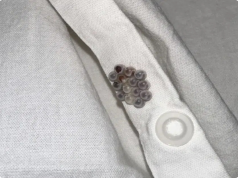It started with a salad — vibrant, layered, and lovingly made with homegrown tomatoes, fresh mozzarella, cured meats, and a drizzle of balsamic glaze. But what happened next was anything but ordinary.
In a matter of days, that humble antipasto salad became the centerpiece of one of TikTok’s most emotional, talked-about, and unexpectedly unifying moments of 2025 — a digital saga now known across the internet as “Antipasto-gate.”
The Viral Moment That Broke the Internet
On July 4, 2025, TikTok user Nicole (@folkmedicineremedies) posted a tearful video that would go on to amass over 33 million views. In it, she recounted how she arrived at a neighborhood July 4th cookout — excited, with her young son in tow — only to be told she wasn’t actually invited.
She had seen a group message, assumed she was included, and prepared a beautiful antipasto salad as her contribution: crisp vegetables from her garden, hand-sliced salami, marinated artichokes, olives, and creamy mozzarella, all arranged in a clear bowl like edible art.
But instead of a welcome, she was met with confusion — then rejection.
“I left the salad,” she said, voice trembling. “I didn’t want to make a scene. But I worked so hard… and now I feel so stupid.”
The video — raw, honest, and deeply relatable — struck a nerve.
From Humiliation to Solidarity: The Birth of “Antipasto-gate”
What followed was a full-blown TikTok phenomenon.
The hosts of the event responded with defensive videos (later deleted), claiming it was “not a party” but a “get-together of people who knew each other.” That phrase — “people who knew each other” — instantly became a meme, echoing across social media like a digital scar.

TikTokers rallied behind Nicole:
- “She brought a masterpiece and got ghosted.”
- “That salad had more heart than their entire guest list.”
- “This is why you don’t make friends in your 30s.”
The internet, often divided, found rare common ground — not in politics, not in trends, but in a salad.
Influencers created:
- Satirical skits
- AI-generated reenactments
- Songs set to Italian folk music
- “Justice for the Antipasto” hashtags
One user summed it up:
“Nothing has united social media like this damn salad.”
And they weren’t wrong.
Why the Salad Struck a Chord
Beyond the interpersonal drama, the antipasto salad itself became a symbol — of generosity, effort, and quiet pride.
Nicole’s dish wasn’t store-bought. It wasn’t a last-minute side. It was handmade, seasonal, and personal — a gesture of goodwill that was met with indifference.
Viewers saw more than a recipe. They saw:
- The loneliness of adulthood
- The fear of social missteps
- The courage it takes to show up
- The pain of being excluded
And in that moment, the antipasto salad became more than food — it became a metaphor for being seen.
What Is Antipasto? A Taste of Italian Tradition
While the modern “antipasto salad” is a staple of American potlucks, its roots are deeply Italian.
The word antipasto comes from the Latin ante (before) and pasto (meal) — meaning “before the meal.” It’s the opening act of a traditional Italian feast, designed to awaken the appetite with bold flavors and textures.
A classic antipasto platter includes:
- Cured meats (prosciutto, salami, coppa)
- Cheeses (mozzarella, provolone, ricotta salata)
- Marinated vegetables (artichokes, peppers, mushrooms)
- Olives and capers
- Anchovies or seafood (in coastal regions)
Historically, it evolved from the Roman gustatio — a course of small, savory bites served before the main meal. Over centuries, regional variations emerged:
- North Italy: Mushrooms, truffles, freshwater fish
- South Italy: Spicy ‘nduja, pickled vegetables, sun-dried tomatoes
The antipasto salad — a chilled, tossed version often served in a bowl — is an Italian-American innovation, blending Old World ingredients with New World convenience.
How to Make the Viral-Worthy Antipasto Salad
Inspired by Nicole’s now-famous dish, here’s a simple version you can make for your next gathering (or just for yourself):
Ingredients:
- 2 cups chopped romaine or mixed greens
- 1 cup cherry tomatoes, halved
- 1 cucumber, sliced
- 1 roasted red pepper, sliced
- ½ cup marinated artichoke hearts
- ½ cup sliced salami or pepperoni
- 1 cup fresh mozzarella (bocconcini or cubed)
- ¼ cup kalamata olives
- 2 tbsp pickled onions or giardiniera
- Fresh basil leaves
- Balsamic glaze or vinaigrette
Instructions:
- Layer ingredients in a large glass bowl or platter.
- Drizzle with olive oil and balsamic glaze.
- Garnish with fresh basil.
- Serve chilled — preferably with love, not judgment.
✅ Pro Tip: Make it in layers for a stunning presentation — perfect for cookouts.
The Legacy of the Salad That United Us
In a world where social media often amplifies division, the story of Nicole’s antipasto salad reminded us of something powerful:
We all want to belong.
That salad wasn’t just food — it was an invitation. A gesture of connection. A hope to be included.
And while the hosts may have turned her away, the internet embraced her.
Restaurants reported a surge in antipasto orders. Grocery stores sold out of mozzarella and salami. #AntipastoSalad trended for weeks.
Some even declared it the unofficial dish of July 4th 2025.
Final Thoughts: A Salad, A Story, A Shared Humanity
Sometimes, the smallest things — a bowl of vegetables, a misunderstanding, a moment of vulnerability — can reveal the deepest truths.
The antipasto salad didn’t just go viral.
It became a cultural moment — a reminder that kindness matters, that effort deserves recognition, and that no one should ever feel foolish for showing up with food in hand.
So next time you’re making a dish to share, remember Nicole.
And when someone brings a salad to your door — even uninvited —
maybe just say:
“Thank you. Let’s eat.”
🥗❤️ Because sometimes, the most powerful ingredient isn’t mozzarella or balsamic — it’s grace.










